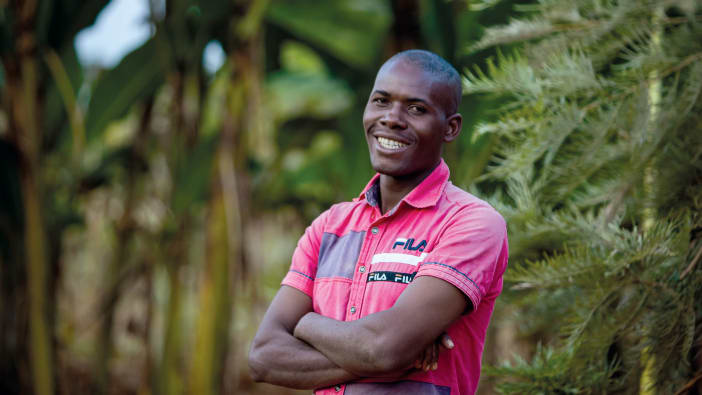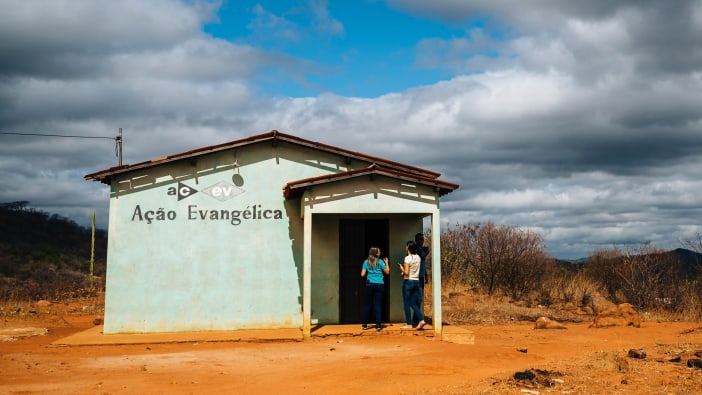Some years ago I carried out research which studied the work of 75 self-formed groups in Uganda and Ghana. Many fascinating details were learned and the value of combining efforts was clear. Several points are of interest as we look at how to produce food in difficult situations.
Sense of purpose
Groups form for many reasons – by the order of local authorities, to gain literacy, to save money, to build a school class-room, to grow or process food crops or to apply for grants from NGOs. Groups that are independent, have a clear sense of purpose and bring benefits to their members may continue for many years.
Leadership
Sometimes groups are called together by a dominant leader who continues to control what the group does. Such leaders may provide clear direction – for example in the growing, processing or marketing of farm crops – so that all members benefit. Groups where leaders have other, hidden motives – particularly if this involves profiting financially – are unlikely to prosper. Dominant leadership, however, is unlikely to encourage discussion and reflection so the skills and confidence of members will not develop. Groups with leaders who encourage members to discuss, plan and evaluate their activities usually become particularly successful.
Trust
Groups that have learned to work together on successful practical activities may develop strong bonds of trust over time. Members become relaxed in each other’s company, develop close friendships, are able to joke with each other and are confident in discussion. Such trust can allow the group to take bolder steps and to plan bigger change, simply because people know they can depend on each other. There are rarely short cuts to such trust which usually develops over several years of friendship and experience.
Money
The safe handling of money within groups is very important. Members need to know they can trust their treasurer and officials completely. Without this trust, their work together tends to be limited to working alongside each other and sharing the benefits. For example, groups of women commonly share the work of processing their crops and then sell separately. However, when there is real trust, women may combine their money in more ambitious joint ventures. They may rent extra land to plant crops or vegetables and work on them together, knowing that their efforts will benefit them all equally. They may work towards buying jointly owned food processing equipment such as grinding mills, cassava grinders or bottling equipment for palm oil or fruit juice. Groups may also start revolving credit schemes, paying in a small amount of money each time they meet so that a lump sum can be lent out to one member at each meeting. In this way (depending on the size of the group) a member would borrow a large sum every year or two. The men in Rwancereere Farmers Association in southwest Uganda paid a contribution each harvest by giving either a sack of potatoes or the equivalent in money. This provided a fund for members to obtain small loans.
Interestingly, few of the groups of men observed were keen to pool their money in these ways! Men preferred the sharing of new ideas and technologies rather than working together. For example, Bikyiiteng Bullock Farmers in Ghana helped share training in the use of bullocks for ploughing and all members were working towards obtaining their own bullocks. Tanyigbe Beekeepers Association shared skills in keeping bees and processing the honey.
Groups that form just to obtain a grant or loan from an NGO to start a small business rarely succeed. This is because they have missed out on the gradual build-up of trust and the experience of working together. Unless a group has been meeting together and successfully working together for two or more years, they are unlikely to use a grant or loan without problems.
Information
One of the findings of my research was that groups enabled the effective sharing of new ideas. Members would support each other in trying them out, and if ideas proved successful they would quickly spread among members. Some groups made time in their meetings to share and demonstrate new skills and information.
Membership
Groups took membership very seriously. People were not able to drop in and out of membership as they pleased. Indeed, some groups even fined members who did not regularly attend meetings. Membership was seen as a privilege which sometimes required a long wait. Occasionally, non-members who were being considered for membership were allowed to attend the meetings. Successful groups would attract new members who could threaten the group’s future existence if numbers grew too large. In many cases, groups either limited their numbers or set up barriers to membership, usually financial.
Nearly all groups elected formal committee members and kept records of minutes, which was surprising given that these were all informal, self-formed groups.
Gender differences
Just over half of the groups visited were women’s groups. Only 15% were men’s groups. A third of the groups had a balanced mix of men and women, often including wives and husbands. Women were more willing to invest time and effort into establishing long term initiatives such as tree plantations, vegetable production and marketing or animal husbandry. Men preferred clear benefits to be apparent for them as individuals from the outset, such as bullock training and access to irrigated vegetable plots.
Social support
Group membership provided an important social support system. This tended to be strongest among women’s groups, whose members were more likely to work together and spend more time in each other’s company. For example, older women talked of the reassurance they felt in knowing that during family sickness and death, other members would support them and appear in large numbers for their funeral. Younger women talked of help and counselling received. In groups with revolving credit systems, members mentioned that if a member was in financial difficulty, their turn to receive a loan might be brought forward.
For example, Zangbogu Women’s Association, based in a very poor area of northern Ghana near Wa, met every fortnight. Members worked together growing fuel trees, groundnuts and soya beans and raising pigs. Their husbands had been impressed by their achievements and the group had been given access to 11 acres loaned by various husbands. Social aspects, such as supporting members with ill health and running a small credit system, played an important part in their group.
Confidence
One of the most surprising observations from the research was the growth in confidence which came from successful groups over time. Groups which tried out different ideas and found success with some of them, gained confidence, first within the group setting, but later this confidence often extended to dealing with others in the wider community, including NGOs and government officials. For example, Ihimbi Women’s Group near Kabale, Uganda or Sokode Novisi near Ho, Ghana regularly visited government departments or officials to request training or advice.
Isabel Carter has edited Footsteps for Tearfund for 14 years. She carried out detailed research into the ways in which information is shared at grass roots level and has developed the PILLARS materials as a way of putting these findings into action.










